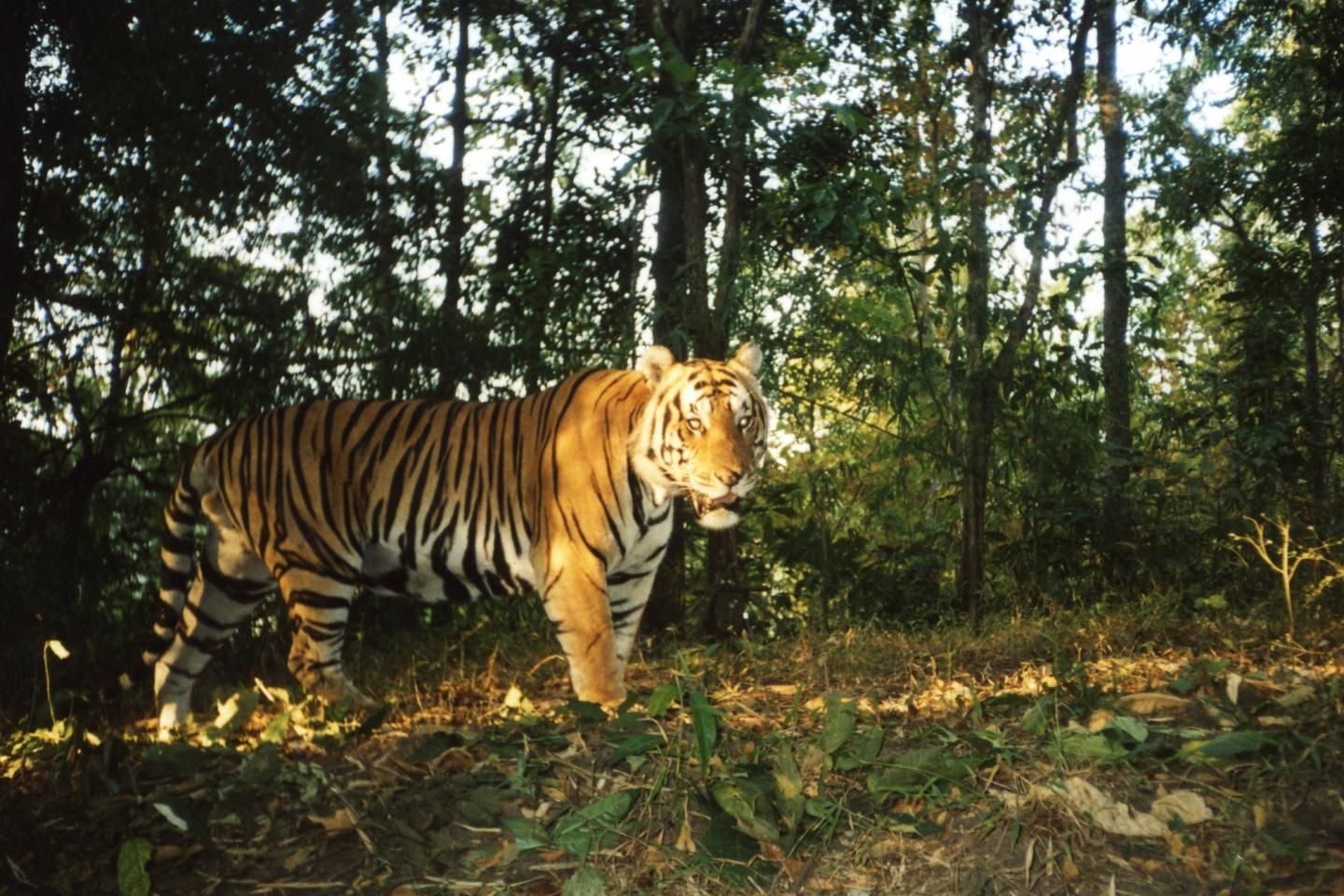
Finally, some good news for the world's largest cats. In just over a century, the number of tigers in the wild has dropped from 100,000 to 3,200, but a protected area in Thailand is showing signs of tiger recovery. A new study by a team of international scientists and the Wildlife Conservation Society identified 57 Indochinese tigers currently in the sanctuary—an increase from the estimated 30 there when the study began eight years ago. It's the only Southeast Asian location where the animals have been confirmed to be increasing in number. The study findings were published in the journal Conservation Biology on February 18.
Ninety-seven percent of wild tigers have been lost in the past century, mostly due to poaching and habitat loss. Today, only 3,200 tigers remain in the wild, where they often must compete for space with encroaching human development. The World Wildlife Fund sounded the alarm for the Indochinese tiger subspecies in 2010, when its total population had fallen by 70 percent in a little less than a decade to 350 tigers. Six countries—Thailand, Cambodia, China, the Lao People's Democratic Republic, Myanmar and Vietnam—are home to Indochinese tigers.
A tiger is a fearsome hunter and can consume up to 88 pounds of meat in one sitting, but can't stand up to traps set by organized gangs of poachers who prize the animal for everything from its teeth to its penis to its pelt. The cats are stalked across their range and their parts shipped to Asia, where they are valued in traditional Chinese medicine. Tiger bone wine is said to impart the tiger's strength and vigor, while tiger penis is used in soup as an aphrodisiac.
Poaching was considered a huge source of tiger population loss in Thailand's Huai Kha Khaeng Wildlife Sanctuary, where in 2006 the Wildlife Conservation Society and the government of Thailand established an intensive patrol system to curb the poaching of tigers and their prey. While the government assigned law-enforcement agents to patrol the sanctuary, the scientists set up nearly 200 camera traps across the 600-square-mile territory. Over the course of eight years, tigers were photographed and individually identified by their stripe patterns. Researchers combined the long-term photo-capture histories with calculations of the abundance and density of tiger populations as well as survival rates. They say the number of distinct individuals photographed demonstrates the value of taking and comparing multiple photographs of individual animals in assessing population dynamics in rare, elusive species. This method of photo capture-recapture has taken the place of traditional biologists going into the field to physically catch and mark animals.
"The protection effort is paying off as the years have progressed, and we expect the tiger population to increase even more rapidly in the years to come," says Somphot Duangchantrasiri, the lead author of the study. Duangchantrasiri says that juvenile survival rates are going up—a very positive sign.
Uncommon Knowledge
Newsweek is committed to challenging conventional wisdom and finding connections in the search for common ground.
Newsweek is committed to challenging conventional wisdom and finding connections in the search for common ground.
About the writer
To read how Newsweek uses AI as a newsroom tool, Click here.








